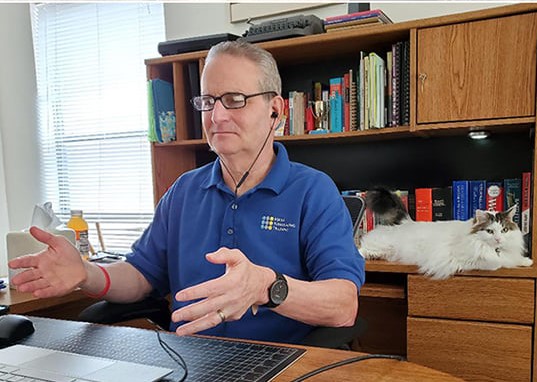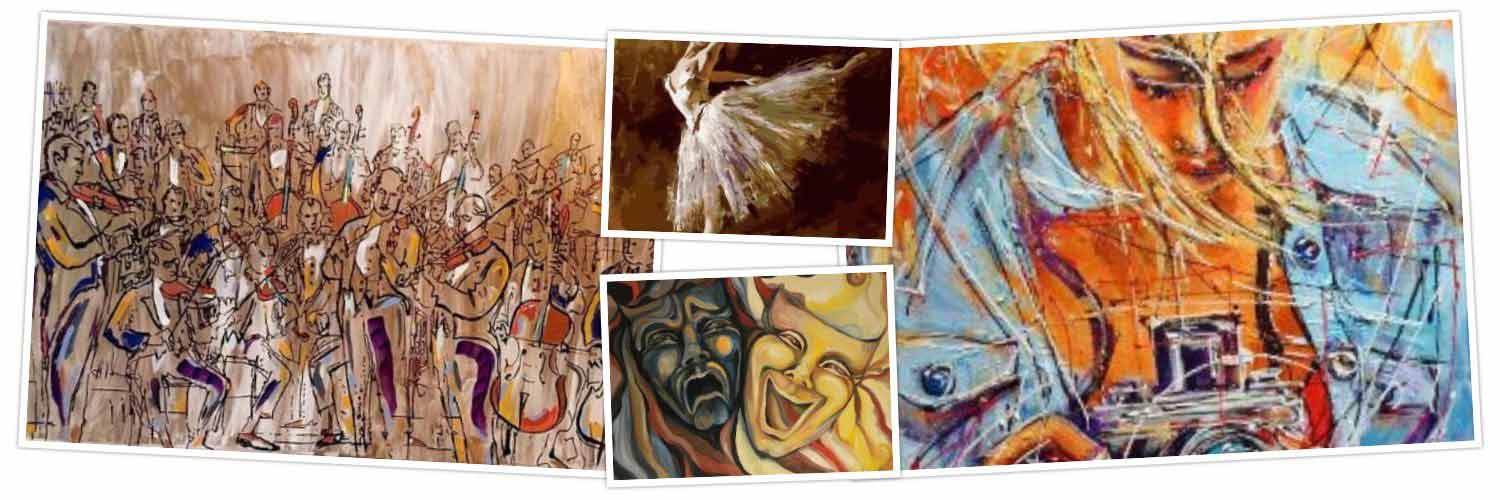Fundraising Pro Jim Eskin Offers Advice for Arts
By JASMINA WELLINGHOFF, Editor —
Arts organization have been hit hard by the COVID pandemic and the measures put in place to prevent the spread of the disease. Many closed their doors for months, furloughed employees, halting programming and worried about long-term survival. The hardest hit were small performing arts companies that depend on ticket sales and do not have substantial endowments to help them ride out the storm.
Though the situation has improved some thanks to virtual programs and creative solutions, such as outdoor shows designed with social distancing in mind, money is still a big issue. So, we decided to seek San Antonio fundraising guru Jim Eskin’s advice about how the survive the crisis. Read on!

Arts organizations, and especially performing arts organizations, have been devastated by the lockdown rules. What would you advise then to do under these circumstances?
WE feel their pain because they are taking hits on both earned and contributed income fronts. The first step is challenging board members to step up and lead by example in both giving and getting gifts. Nonprofits no longer have the luxury of wasting board seats. Now more than ever, funders will be scrutinizing the percentage of board members providing financial support. Board members must all also step up and break the ice and introduce potential donors from their personal networks.
Which sources of funding can you suggest, since governmental sources, including the City of San Antonio, have hugely diminished or eliminated funding for the arts?
Turn first to your current donors who have demonstrated commitment to your mission… If you have patrons and subscribers who are not donors, this is the perfect time to ask them to double down on their investment in the vitality of the arts,
Are virtual fundraising events effective?
Yes! We are seeing plenty of evidence of nonprofits raising as much if not more gift income from virtual events, because expenses are so much lower. We are even seeing positive results from “no-event” events in which donors just make gifts and receive an e-mail and/or video update on the organization.
What is the best way to approach a potential new donor/source of funding?
Avoid call calls. Find board members or current donors who can make a warm (virtual) introduction. Tele-conferencing technology is ideally suited for this role. Also, consider donors to other arts organizations who might not be supporting yours.
Does it make sense for smaller groups to create some kind of collective and collaborate on fundraising?
Absolutely! We’re advising: collaborate like your life depends on it.
What’s the number one advice you’ll give smaller organizations when it comes to raising funds?
You’re in a position to treat major donors like kings and queens. A gift that may be considered modest by larger entities can achieve an enormous impact within smaller organizations.
Do men and women behave differently as donors?
Yes. Women across nearly all income level gave significantly more to charity than men – nearly twice as much in some cases – according to studies by the Indiana University Lilly Family School of Philanthropy.
You referred to “changes in the tax code that have affected annual giving.” Please explain?
To encourage more charitable giving in 2020, the government stimulus bill (The CARES Act) provides some additional tax relief for donors. This makes it easier to give and save at the same time. For example: if you take the standard deduction on your 2020 tax return (the one you’ll file in 2021), you can claim a brand new “above the line” deduction of up to $300 for cash donations you made this year.
Have you detected any positive changes in charitable giving for the arts in recent weeks or months?
This applies to all nonprofits. The best predictor of philanthropy is the stock market which has held up amazingly well. People in position to make major gifts can continue to do so. In fact, they might be in an even better position since the ability to spend on other luxuries, like travel and entertainment, has been reduced.
Does the massive political fundraising affect donations to the arts?
Surprisingly, most research indicates that it doesn’t. However, nonprofits should rethink their timelines for end-of-year appeals. In the past, close to one third of annual gifts were made in December. This year we are expecting the Nov. 3rd election and aftermath to dominate everyone’s attention. Nonprofits would be wise to crank up their end-of-year appeal machinery starting in October.
—————————————–
After a 30-year career in fundraising, public affairs and communications, Jim Eskin launched Eskin Fundraising Training in 2018. Over the past two years, he has led more than 100 workshops on the subject of fundraising in partnership with Microsoft, Texas Capital Bank, Catto & Catto and MassMutual South Texas. Eskin is also the author of the book “10 Simple Fundraising Lessons.” To sign up for a webinar go to: https://visitor.r20.constantcontact.com/manage/optin?v=0013yYWxIr3lUE3aWsILLLbLYfRf8jnHI-L
